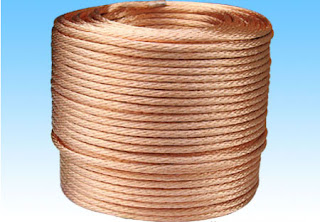In July 2005, NASA launched an ambitious project into space. The project was pegged on the performance of mankind’s oldest known metal- Copper. The NASA Project was designed to rip open a comet in the outer space and extract valuable cosmic compounds from its core and bring it back to Earth for studies. The probe deployed high quality copper wire modules and copper-topped body. The armoured probe vehicle blasted into the comet surface and examined the contents.
Do you know about the project and how important it is for mankind? How copper played a vital role in the project?
Let us find out.
Name of the probe:
Do you know about the project and how important it is for mankind? How copper played a vital role in the project?
Let us find out.
Name of the probe:
The mission is carried forward by the barrel-shaped tinned copper body called Deep Imapactor. It is one of the most sophisticated space vehicles ever conceived, designed and built by NASA scientists. The core of the vehicle is run by electronic chips made of copper compounds and aluminium interconnects. The electrical are braided copper wires housed to nano-sized motors driving synchronously with the electronic circuitry. Fibre optic cables- Single mode, have also been extensively used along with bare copper wires in the transmitting signals.
Role of Copper:
Copper is used as the core element in the probe. It is the heavy metal base in the project that gives the Deep Impactor much of its weight. Weighing 816 pounds, Deep Impactor’s weight more or less is entirely contributed by copper and its wire frames. The alloyed copper wires and body plates gave it the aerodynamic suppleness and efficiency. Striking the comet at a speed of 6.6 miles per second, the probe dented a hole into the comet, the size of a big football field.
Here are some of the salient features of the copper used in the probe mission.
• Copper wires used in the electronic cluster used 3 percent beryllium for fortification.
• Molecular structure of copper makes it one of the most prolific space materials. It resists corrosion and highly inflammable space conditions owing to its partial inertness against oxygen. Once it collided with the comet, the electrical parts remained intact. It did not get burned due to the huge amount of energy released from the collision. Success of the mission was majorly based on the quality and performance of the copper wire used.
• Copper resisted the high temperatures and did not turn into vapours. The scientists in NASA could gather valuable information as the emissions did not interfere with the probe.
Name of the comet it is examining:
Role of Copper:
Copper is used as the core element in the probe. It is the heavy metal base in the project that gives the Deep Impactor much of its weight. Weighing 816 pounds, Deep Impactor’s weight more or less is entirely contributed by copper and its wire frames. The alloyed copper wires and body plates gave it the aerodynamic suppleness and efficiency. Striking the comet at a speed of 6.6 miles per second, the probe dented a hole into the comet, the size of a big football field.
Here are some of the salient features of the copper used in the probe mission.
• Copper wires used in the electronic cluster used 3 percent beryllium for fortification.
• Molecular structure of copper makes it one of the most prolific space materials. It resists corrosion and highly inflammable space conditions owing to its partial inertness against oxygen. Once it collided with the comet, the electrical parts remained intact. It did not get burned due to the huge amount of energy released from the collision. Success of the mission was majorly based on the quality and performance of the copper wire used.
• Copper resisted the high temperatures and did not turn into vapours. The scientists in NASA could gather valuable information as the emissions did not interfere with the probe.
Name of the comet it is examining:
The Deep Impactor space probe followed the trail of the comet named, Tempel I. It chased the comet for 175 days before colliding with it on its course. The comet is travelling at a speed of 6.4 miles per second. NASA’s electronically guided navigation system directed the probe on the comet’s trail 2 hours before collision. The comet’s nucleus was the collision point, defined strategically by high-end navigation system. It collided on July 4, 2005.
Copper continues to feature in NASA’s space probe mission due to its resounding success in the past.
Copper continues to feature in NASA’s space probe mission due to its resounding success in the past.



